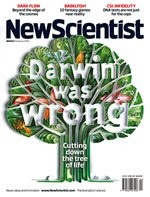So, the results of the Vanier Canada Graduate Scholarships have been released. A big congratulations to this year’s 166 recipients, who represent promising new researchers. However, it cannot be pointed out enough how poorly this program meshes with funding for other Canadian students and scientists. $50,000 for 3 years is what they get, which is 2.5x more than regular NSERC scholarship winners, $10,000 more than postdocs get, and nearly twice the average grant for people actually starting a lab. Remember, too, that this is twice what they gave one of our leading statisticians this time.
What could have been funded with the $25 million instead?
- Regular MSc scholarships for 2 years: 711, or
- Regular PhD scholarships for 3 years: 395, or
- Discovery Grants at the average of $34K for 5 years: 146
[Update]
Furthermore, note the following:
- The scholarships can be awarded to non-Canadians. The plan, I presume, is to draw top students to Canada. How likely is it that they’ll stay when the find out that there is now a 65% chance that they will get an NSERC grant, and that it will average about $34,000 to run an entire lab?
- The intent is to award 500 of these per year. That’s $25 million per year on scholarship students, folks. Meanwhile, 35% of existing researchers — who already have PhDs, completed postdoctoral research, landed a job at a Canadian university, and have built a lab whose primary functions include training students — get nothing, while the rest receive $15,000 less on average than single scholarship students.
- These scholarships represent a direct trade-off between funding the MSc program for 2 years instead of 1 year. In other words, an already very competitive scholarship program just became decidedly elitist — better to give a few people an outrageous sum than to fund more of our other top students in the country.
- These scholarships further exacerbate the inequalities in research support among universities in Canada. Not surprisingly, the largest schools got lots, mid-sized schools got some, and most of the smaller schools got none.
I have yet to meet a colleague who thinks this is a good idea.

